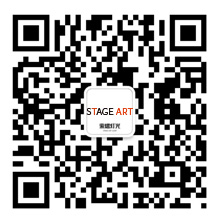There are various stages in the theater stage, there are ordinary frame-style stage, there are extended stage, there is an island stage, and there is also a stage called black box. Because the stage forms are different, the configuration requirements of the lamps are not the same. Here we only talk about the general frame-like stage. This kind of stage is more or less necessary in the past or in the current reconstruction and new theater. Therefore, it is extremely necessary and necessary to talk about the lighting configuration of this stage.
The stage (which refers to the frame-style stage, the latter is the same) will have different lighting requirements due to the different repertoires. Therefore, before we use the lamps, we must clearly understand which repertoires are mainly performed on this stage, so that the lamps and lanterns will have clear goals and intentions. If some stage is positioned in the traditional opera and ballet, the configuration of the lamps must be configured according to the requirements of opera and ballet. For example, in the case of large-scale songs and dances, chowders and other special programs, in addition to the basic requirements of the lighting, the special lamp position and the configuration of the lamps should be added according to the specific program requirements, so that it is difficult to tell clearly. Therefore, I am only talking about the basic lighting configuration of the theater stage. According to this configuration, the river meets the requirements of local dramas such as opera, dance, ballet, drama, and Beijing opera.
Before configuring the luminaires, you should understand the types of luminaires and their main functions and uses at first. I will briefly introduce the performance of some luminaires here for the choice of luminaire configuration.
1.Spotlights - Spotlights used on the stage refer to the use of flat-convex concentrating mirrors in front of the lamps. This type of luminaire can adjust the spot size, and the resulting beams are concentrated. The diffused light on the side is relatively small, and the power is 0.5W. Up to 5KW, the focal length is long, medium and short, and the distance of the range is chosen as needed.
2.The rib lamp - or soft light, but in the television industry, the lamp is called a spotlight. In order to distinguish the above-mentioned flat convex spotlights from the stage, the diffused area is large, and sometimes the diffused area is large, and in order to control the diffused light, a front page is added to the front of the mirror to cover the surface, which is characterized by a large area of the light area, which is not like a cluster. The music lamp has a clear spot feeling, the shooting distance is relatively close, and the power is 1KW, 2KW and so on.
3.Back light - there is no lens in front of this kind of lamp, the light is completely emitted by the larger mirror behind it. With the same 2KW bulb, the brightness is brighter than the concentrated light, so when the stage is to show strong light source and brightness use. The effect is better than other lamps, characterized by strong beam, but pay attention to the focus point when dimming, it is not appropriate to adjust the focus point on the color paper or the screen, which is easy to cause burning, and the center often appears black when dimming In order to avoid the black heart, an annular baffle is added at the center of the front end of the lamp, and the spot light emitted is large and not easy to gather. Now a new type of coating on the reflective bowl to make the outer line of the line backwards to reduce the temperature in front of the lamp, the effect is very good, the name is cold light super spotlight, the actual structure of the lamp is the same as the backlight.
4.Imaging lights - or shaped lights, ellipsoid spotlights. There are a variety of beam angles that can be selected and applied according to needs. The main characteristics are such that the light spots can be cut into square, diamond, triangle and other shapes, or the various patterns can be projected, and the power is also 1KW, 2KW, etc. Optional configuration.
5.Downlight - also known as PAR lamp, or beam lamp, its structure is to install a mirror bulb in the cylinder and also use a reflective bowl to install bromine tungsten bubble. The main characteristic is to shoot a relatively fixed beam, the beam angle is wide and wide. The spot size cannot be adjusted.
6.Daylighting lamp - a high-power astigmatism lamp used to illuminate the skylight from top to bottom, requiring a bright and balanced, large illumination area.
7. Floor lamp - high-power astigmatism lamp, used to place on the stage surface, the lower part of the skylight is illuminated upwards, and the light irradiated by the sky row lamp is connected, and the upper and lower sides are even.
8.Astigmatism strip light - long strip, divided into multiple grids, generally can be divided into three or four colors, each grid with incandescent bulb power of about 200W, requires a variety of colors to self-align, for large-area illumination curtain or painting The curtain can also be used as a large-area balanced lighting. Various colors of light can also be used at the same time to bring out different colored beams.
9.General astigmatism lamps - such as iodine-tungsten lamps and ordinary floodlights, are mainly used to evenly illuminate an area, or some set of scenery.
The luminaires introduced above are the basic luminaires used in the general stage, but other types of luminaires should be configured due to the different forms of the performance. For example, in addition to the basic lamps, the singing and dancing party uses a large number of downlights, computer lights, hose lights, lights, various effects lamps, and even smokers, dry ice machines, strobe lights, lasers and projection slides, and supporting use. For post-projection, to reduce the source of spots, special seamless plastic screens, etc., here are not examples.
Stage lamps and lanterns allocation, with mouth as the boundary, dividing the two major parts outside and inside the desk mouth.
Outside the platform General has face light, ear light,bags,Long-distance follow light room
1. Face light According to the scale of the theater stage, there is a face light, two light, and even three light. The configuration of the surface light should be based on the distance between the distance and the distance, and the spotlights and imaging lights with different set distances should be above 2KW. The first surface light is closer to the mouth of the station, and some 2KW rib lights and back lights can be added. A face light and two side lights should be equipped with a suitable focal length in the left, middle and right positions. The power-matching light-receiving lamps can be individually controlled by the chasing personnel to control their brightness and color change.
2. The ear light arranged on the left and right sides of the platform. According to the scale of the theater stage, one or two slaps can be set on each side. The lamps are arranged, mainly for spotlights. The imaging lights and rib lights can be configured in a small amount, because the slaps rely on the audience hall. The side wall is very close. When using the rib lamp, the diffused light often brightens the wall near it, affecting the atmosphere of some scenes, so it should be used less. A set of chasing lights should be set in each of the left and right slaps for the chasing personnel to control.
3. The foot light is generally on the side of the music pool outside the mouth of the station. The foot is light, the built-in four-color astigmatism strip light, and the color separation control, the length is slightly smaller than the width of the table.
4.Long-distance follow light room,generally, there is one room at the back and left of the auditorium, with gas discharge lamps such as xenon lamps. All control is operated by the tracer. If there is no special tracing room, the tracing lamp positions are usually set in the rear areas of the left and right sides of the building.
5.Bags light,According to the theater situation, you can set a number of spotlights in the left, middle and right corners of the box (stairs). If the conditions are not allowed, you may not set them.
二、Inside the platform generally divides the side of the platform (left and right column light), the fake table top (one hanging bridge), two tops, three tops, four tops, five tops, the sky row, the ground row, the left and right flow, the left and right sides Light (left and right cages), a cage, two cages, three cages, four cages, five cages, etc., depending on the size of the stage, some facilities are less, such as the top light is based on the stage The depth and depth of the scenic area to determine a few suitable. The left and right side light (cage) should also be considered according to the size of the stage or even the amount of investment. Some stage has a post-stage or anti-projection requirement behind the sky, which is also considered according to the scale of the stage, investment, and major repertoire. If there is such a possibility, the configuration of the luminaire should of course be planned. For use in conjunction.
Some theater stage top lights do not have astigmatism strip lights, but instead use rows of iodine-tungsten astigmatism lights. The way the luminaires are configured can be changed as needed, but the performance of the various luminaires should be considered. Make it work for me to make the best of it.
 China
China English
English








